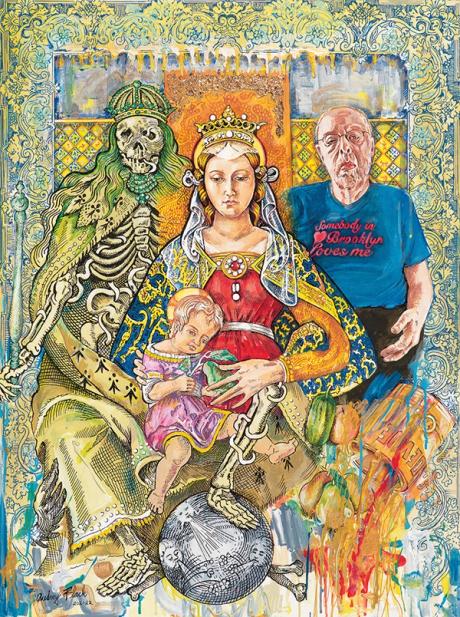
“If I were to die tomorrow, no one would say, ‘Too bad, she was so young’,” wrote the artist Audrey Flack in the epilogue of With Darkness Came Stars, her memoir published earlier this year, months before she passed away in June. You might expect such thoughts about mortality from someone about to mark her 93rd birthday, but you would not necessarily expect it from Flack—a vivacious artist always moving, creating, reinventing and, in that particular moment, opening a solo show at New York’s Hollis Taggart Gallery as well as planning her first solo institutional exhibition in years.
The latter is now opening without her, Audrey Flack: Mid-Century to Post-Pop Baroque at the Parrish Art Museum in Water Mill, New York. “Audrey was actively involved in the planning, layout and selection of works for the exhibition,” says the museum’s executive director Mónica Ramírez-Montagut. “The museum has not made any changes to the show since her passing.”
I have been lucky enough to make it this far and am in the process of preparing for my inevitable demise
The late US artist Audrey Flack
Like Flack’s most recent show at Hollis Taggart, Mid-Century to Post-Pop Baroque will highlight the artist’s work of the last four years—canvases that collide contemporary popular images and the personal with her encyclopaedic knowledge of art history. In Madonna della Candeletta (Someone in Brooklyn Loves Me) (2021-22), for example, Flack reproduced a Madonna by the Italian Renaissance artist Carlo Crivelli, flanked by a skeleton from a 17th-century John Payne engraving on one side and on the other, a portrait of her husband Bob wearing a T-shirt that says, “Somebody in Brooklyn Loves Me”—the kind you might find in a kitschy tourist shop, here in a distinctly Marian blue.
It will be the first time Flack’s recent “Post-Pop Baroque” paintings (a genre she coined herself since no others adequately described her work) are exhibited in an institution; museum shows have tended to focus on earlier Abstract Expressionist or Photorealist work.
Changing faces
Among the roughly 30 Flack works in the exhibition will be several self-portraits in different media and spanning her career. Flack returned to her own visage again and again, whether she was depicting herself in expressive brushstrokes or polychrome sculpture, just as she always brought the people and stuff of her life into her work. The show will also include her sculptures in bronze, plaster casts and painted fibreglass, early career paintings and watercolours, lithographs of mid-career Photorealist works, and her pieces in the Parrish permanent collection.
Flack’s work is often on view at the Parrish, since the museum champions her as a local East Hampton artist. In addition to her Manhattan apartment, Flack maintained an old Victorian-style home and studio that she bought from the artist Jimmy Ernst in the early 1970s. After enlarging the studio and adding skylights, it was there that she had the space for her sculptures and large-scale canvases.
“I have been lucky enough to make it this far and am in the process of preparing for my inevitable demise,” Flack added in her memoir’s epilogue. This exhibition may have been part of that preparation, a way for her to show us her work as she would like us to see it.
Karen Chernick
Audrey Flack: Mid-Century to Post-Pop Baroque, Parrish Art Museum, Water Mill, 14 October-6 April 2025


